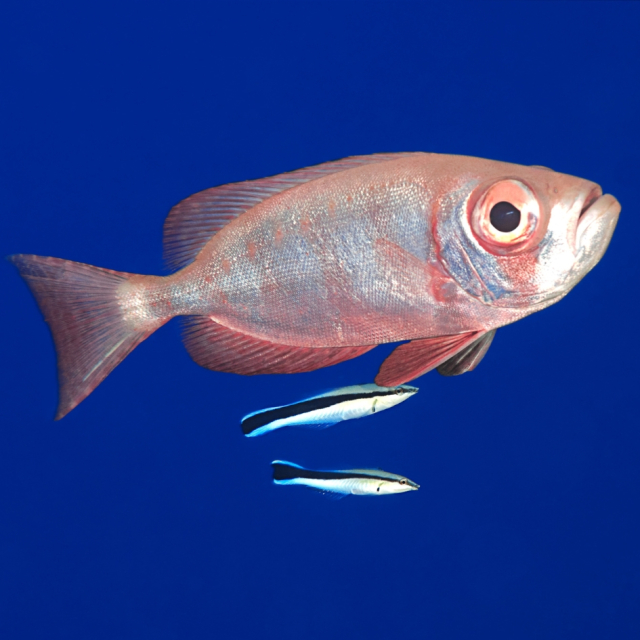Nature is full of complex and fascinating interactions between different organisms. One of the most interesting is symbiosis, a close and long-term relationship between two different species that can take many forms. These symbiotic relationships are essential for the balance of ecosystems and can be mutually beneficial, unilateral, or even detrimental to one of the parties.
This article delves into what symbiotic relationships are, the different types that exist, significant examples, and their importance in the natural environment and in our lives.
What are symbiotic relationships?
The term "symbiosis" comes from the Greek sym (together) and biosis (to live), which literally means "living together." It is used to describe any type of close and prolonged biological interaction between two different species. These interactions can vary widely in terms of the benefits or detriments to each organism involved.
Source: National Geographic
Types of symbiotic relationships.
There are three main categories of symbiotic relationships, depending on how the interaction affects the organisms involved:
1. Mutualism.
Mutualism is a relationship in which both species benefit from each other. This type of interaction is crucial for many ecosystems and can occur between plants, animals, fungi and bacteria.
- Example: Bees and flowers. Bees obtain nectar from flowers, which they use as food, while flowers benefit from pollination, which bees perform by transporting pollen from one plant to another.
2. Commensalism.
In commensalism, one species benefits while the other is not affected, either positively or negatively.
- Example: Remoras and sharks. Remoras attach themselves to the shark using a suction cup on their head, feeding on the shark's food scraps without harming or benefiting the host animal.
3. Parasitism.
Parasitism occurs when one species benefits at the expense of another, causing harm to the host.
- Example: Fleas and mammals. Fleas feed on the blood of their hosts, causing discomfort and even illness.
Source: Britannica
Examples of symbiotic relationships in nature.
Mutualism: Mycorrhiza and plants.
Mycorrhizae are symbiotic associations between fungi and plant roots. The fungus helps the plant absorb essential nutrients such as phosphorus and nitrogen from the soil, while the plant provides the fungus with sugars and carbohydrates produced during photosynthesis.
Commensalism: Herons and cattle.
Herons follow grazing animals such as cows or horses, feeding on insects that are kicked up from the ground as the cattle pass by. In this case, the cattle do not benefit or suffer.
Parasitism: Mistletoe and trees.
Mistletoe is a parasitic plant that draws water and nutrients from the trees it attaches to, weakening its host.
Source: BBC Earth
Ecological importance of symbiotic relationships.
Symbiotic relationships play a crucial role in maintaining ecosystems. Some of their functions include:
- Ensuring biodiversity: Symbiotic interactions allow coexistence and collaboration between different species, which promotes biological diversity.
- Support for the food chain: Many symbiotic relationships, such as pollination, are essential for food production in ecosystems.
- Nutrient cycling: Symbiotic associations, such as mycorrhizae, enhance the recycling of essential nutrients in soils.
- Adaptation and evolution: These relationships often drive co-evolution, where both species develop specific adaptations to optimize their interaction.
Source: Science Daily
Symbiotic relationships and human beings.
Although we often associate symbiotic relationships with wildlife, humans are also deeply influenced by them.
The human microbiota.
The human body is home to trillions of microorganisms that live in symbiosis with us, primarily in the intestinal tract. These bacteria help us digest food, produce essential vitamins, and protect us against harmful pathogens.
Agricultural and symbiotic relationships.
In agriculture, farmers take advantage of symbiotic relationships to improve crop yields. For example, planting legumes benefits the soil thanks to the nitrogen-fixing bacteria that live in their roots.
Source: NIH - Human Microbiome Project
Challenges and threats to symbiotic relationships.
Symbiotic relationships, although resilient, face numerous threats due to human activity:
- Habitat loss: Deforestation and urbanization disrupt symbiotic relationships by eliminating the ecosystems where they occur.
- Climate change: Changes in climate can destabilize natural cycles, affecting interactions between species.
- Pollution: The introduction of toxic chemicals and waste into the environment can harm organisms involved in symbiotic relationships.
Source: WWF
Unusual symbiotic relationships.
Some symbiotic relationships are so unique they seem straight out of a science fiction movie.
- Pistol Shrimp and Goby: These two marine animals have a mutualistic relationship in which the shrimp digs and maintains a burrow for both, while the goby acts as a lookout, alerting the shrimp to potential danger.
- Woodpecker and Beetle: In a mutualistic relationship, woodpeckers feed on beetle larvae that inhabit dead trees, helping to control pests.
Source: National Ocean Service
How can we protect these relationships?
Since symbiotic relationships are essential for ecological balance, it is crucial to take steps to preserve them:
- Promote conservation: Support conservation projects that protect natural habitats.
- Reduce pollution: Minimize the use of pesticides and harmful chemicals that disrupt ecosystems.
- Promote environmental education: Teach people about the importance of symbiotic relationships and how they can contribute to their protection.
Source: Environmental Protection Agency
Symbiotic relationships are a reminder of the interconnectedness that exists in the natural world. From the mycorrhizae that feed plants to the microorganisms in our bodies, these interactions are essential for the survival and balance of ecosystems.
However, human activities pose a significant threat to these relationships. Protecting them is not only crucial to preserving biodiversity, but also to ensuring our own survival. Understanding and valuing these relationships allows us to make more informed and sustainable decisions, ensuring a balanced future for all the planet's inhabitants.
Sources consulted:
